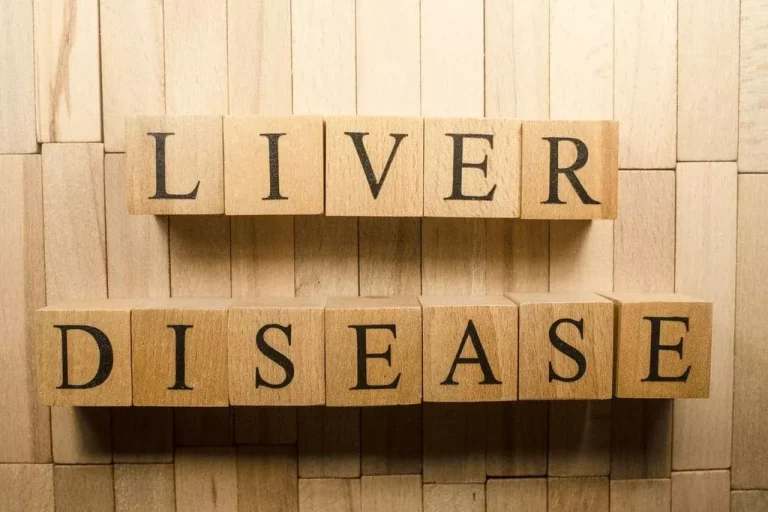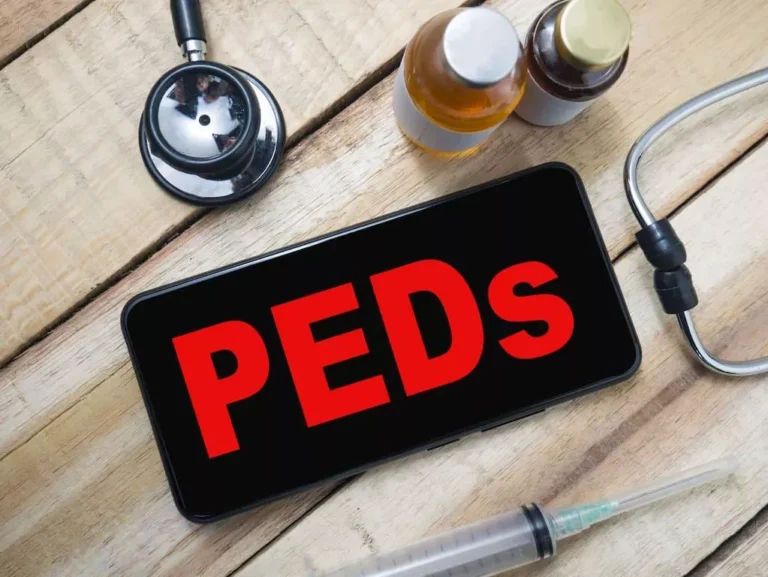5 Stages of Alcoholism: Signs, Symptoms, and Treatments

Still, they often include environmental factors such as exposure to family conflict or parental substance abuse, as well as psychological factors like stress or emotional distress. Seeking professional help from addiction specialists, therapists, or support groups can provide the necessary guidance and support during this critical stage. It’s important to note that early intervention can lead to a more favorable prognosis for those struggling with alcoholism. Depending on the needs of the individual, alcohol addiction treatment can occur on a residential or outpatient basis. Patients in residential treatment live on-site at a facility while in rehab.
Recovery Coaching
- Those struggling with AUD usually had their first exposure to alcohol during their teenage years, driven by curiosity or peer influence.
- In mid-February, Kosar said he was also diagnosed with Parkinson’s, a neurodegenerative disorder of the brain, by an independent NFL doctor.
- The most appropriate treatment plan will depend on the individual’s specific needs and circumstances.
- Fluid buildup in end-stage liver disease is a particularly ominous sign.
- While support groups are not a substitute for professional treatment, they can be crucial in sustaining recovery.
Alcoholism not only affects the physical health of an individual but also has a significant impact on their mental health. Depression and anxiety are two common mental health disorders that individuals struggling with alcoholism may experience. As alcoholism progresses, individuals move from the pre-alcoholic stage to the early-alcoholic stage, where the effects of alcohol consumption become more apparent. This stage is characterized by increasing tolerance to alcohol and the development of early signs of alcohol dependency. The Recovery Village Cherry Hill at Cooper offers comprehensive addiction treatment for drug and alcohol addictions and co-occurring mental health conditions.
- Alcoholism is a dangerous and life-altering disease that can seriously affect your health and well-being.
- These can include traumatic experiences from combat, severe chronic pain from combat or service-related injuries, PTSD, and reintegration into civilian life.
- In the third stage of alcohol addiction, individuals have increased beyond moderate levels but have not reached severe dependence.
- With the right combination of support, guidance, and resources, recovery from alcoholism is possible.
- The initial phase, often characterized by increased tolerance and experimentation with alcohol, may not immediately signal an addiction.
- For instance, witnessing parental substance misuse or experiencing family conflict and violence can predispose children to heavy alcohol use.
Signs and Symptoms of Early-Stage Alcoholism

If you feel that you sometimes drink too much alcohol, or your drinking is causing problems, or if your family is concerned about your drinking, talk with your health care provider. Other ways to get help include talking with a mental health professional or seeking help from a support group such as Alcoholics Anonymous or a similar type of self-help group. Late-stage, or end-stage alcoholism, is a full-blown addiction to alcohol, often with damaging physical and mental health effects. The progression of alcoholism is often divided into distinct stages, and each stage is characterised by specific patterns of behaviour and physical symptoms. Studying this progression can help you to understand how casual drinking can evolve into a severe alcohol dependency.
Impact of Alcoholism on Mental Health
A complex interplay of genetic and environmental factors influences early-stage alcoholism. Research indicates that genetics contribute significantly to the risk of developing alcoholism, with heritability estimates ranging from 50-70%. Specific genes may predispose individuals to alcohol-seeking behaviors, differential responses to alcohol, and variations in the neurobiology of addiction and stress response. For instance, the presence of a common variant in the catechol-O-methyltransferase (COMT) gene has been linked to both risk and resilience to alcoholism in different drinking environments. Research indicates that the effects of chronic alcoholism are not uniform across all individuals, with age-related differences in susceptibility and recovery. Adolescents, for instance, may exhibit resilience to long-term effects compared to adults, suggesting a dynamic interaction between alcohol consumption and developmental stages.
The stages of alcohol misuse explained
It’s important to understand that alcoholism is not a choice or a moral failing, but rather a chronic illness that requires medical treatment. One essential step in maintaining sobriety is to build a strong support system. Having individuals who understand the challenges of recovery and offer encouragement and accountability can be incredibly helpful. Alcohol is a depressant https://ecosoberhouse.com/article/why-do-alcoholics-crave-sugar-in-recovery/ that can worsen symptoms of depression, making it more challenging for individuals to cope with their emotions. Moreover, individuals with depression may turn to alcohol as a way to self-medicate, which can lead to a vicious cycle of drinking and worsening depression. Individuals may be aware that they have a problem, but may not be ready to admit it to themselves or others.
- As the disease progresses to the middle stage, drinking continues to increase and dependency develops.
- When they examine themselves in the mirror, they may not recognize themselves.
- Because the body has adapted to deal with an alcohol-rich environment, the alcoholic physically needs it to avoid the painful symptoms of withdrawal.
- Your health may decline rapidly, as your essential organs become compromised.
The safest course of action is to seek treatment in a professional environment that is catered to the individual needs, preferably with holistic treatment. It may sound backward, but the person may feel that they function better when they are intoxicated. This is because they only feel the negative effects of alcohol when they stop drinking.

Detoxification and Therapeutic Interventions in Alcohol Addiction Treatment

There is an evident dependence on alcohol to cope with stress or discomfort. In this phase, the most dangerous factor here is the potential alcohol habit formation that ultimately contributes to compulsive alcohol use. Initially, it triggers pleasurable sensations and dampens negative emotions, creating a consumption cycle driven by the desire for these effects. However, continued use can lead to alterations in brain structure and function, amplifying vulnerability to addiction. As these changes persist even after zero alcohol intake, the risk of relapse is present.
Stage #3: Problem drinking
The approach involves facilitating discussions and problem-solving sessions to support the patient’s recovery journey. The affects can range from dementia and intellectual functioning to debilitating conditions that require long-term care, even if a person has been sober for 5 stages of drinking a period of time. At this point, it’s obvious to those close to you that you’re struggling. You might miss work, forget to pick up the kids, become irritable, and notice physical signs of alcohol abuse (facial redness, weight gain or loss, sluggishness, stomach bloating).
Expanding the continuum of substance use disorder treatment: Nonabstinence approaches PMC

In this model, treatment success is defined as achieving and sustaining total abstinence from alcohol and drugs, and readiness for treatment is conflated with commitment to abstinence (e.g., Harrell, Trenz, Scherer, Martins, & Latimer, 2013). Additionally, the system is punitive to those who do not achieve abstinence, as exemplified by the widespread practice of involuntary treatment discharge for those who return to use (White, Scott, Dennis, & Boyle, 2005). Findings concerning possible genetic https://ecosoberhouse.com/article/writing-a-goodbye-letter-to-alcohol/ moderators of response to acamprosate have been reported [99], but are preliminary. Additionally, other findings suggest the influence of a DRD4 variable number of tandem repeats (VNTR) polymorphism on response to olanzapine, a dopamine antagonist that has been studied as an experimental treatment for alcohol problems. Olanzapine was found to reduce alcohol-related craving those with the long-repeat VNTR (DRD4 L), but not individuals with the short-repeat version (DRD4 S; [100,101]).
Expanding the continuum of substance use disorder treatment: Nonabstinence approaches
- As the client gains new skills and feels successful in implementing them, he or she can view the process of change as similar to other situations that require the acquisition of a new skill.
- Multiple versions of harm reduction psychotherapy for alcohol and drug use have been described in detail but not yet studied empirically.
- However, to date, there has been no systematic review of the effects of abstinence across multiple potential behavioral addictions.
- A number of studies have examined psychosocial risk reduction interventions for individuals with high-risk drug use, especially people who inject drugs.
- According to these models, the relapse process begins prior to the first posttreatment alcohol use and continues after the initial use.
- In the first study to examine relapse in relation to phasic changes in SE [46], researchers reported results that appear consistent with the dynamic model of relapse.
In one of the first studies to examine this effect, Herman and Mack experimentally violated the diets of dieters by requiring them to drink a milkshake, a high-calorie food, as part of a supposed taste perception study [27]. Although non-dieters ate less after consuming the milkshakes, presumably because they were full, dieters paradoxically ate more after having the milkshake (Figure 1a). This disinhibition of dietary restraint has been replicated numerous times [20,28] and demonstrates that dieters often eat a great deal after they perceive their diets to be broken.
Cognitive neuroscience of self-regulation failure
Shiffman and colleagues [68] found that restorative coping following a smoking lapse decreased the likelihood of a second lapse the same day. Some studies find that the number of coping responses is more predictive of lapses than the specific type of coping used [76,77]. However, despite findings that coping can prevent lapses there is scant evidence to show that skills-based interventions in fact lead to improved coping [75]. Researchers have long posited that offering goal choice (i.e., nonabstinence abstinence violation effect definition and abstinence treatment options) may be key to engaging more individuals in SUD treatment, including those earlier in their addictions (Bujarski et al., 2013; Mann et al., 2017; Marlatt, Blume, & Parks, 2001; Sobell & Sobell, 1995). Because relapse is the most common outcome of treatment for addictions, it must be addressed, anticipated, and prepared for during treatment. The RP model views relapse not as a failure, but as part of the recovery process and an opportunity for learning.
Cognitive Behavioural model of relapse
For example, successful navigation of high-risk situations may increase self-efficacy (one’s perceived capacity to cope with an impending situation or task; [26]), in turn decreasing relapse probability. Additionally, attitudes or beliefs about the causes and meaning of a lapse may influence whether a full relapse ensues. Viewing a lapse as a personal failure may lead to feelings of guilt and abandonment of the behavior change goal [24]. This reaction, termed the Abstinence Violation Effect (AVE; [16]), is considered more likely when one holds a dichotomous view of relapse and/or neglects to consider situational explanations for lapsing.

Thus, this perspective considers only a dichotomous treatment outcome—that is, a person is either abstinent or relapsed. In contrast, several models of relapse that are based on social-cognitive or behavioral theories emphasize relapse as a transitional process, a series of events that unfold over time (Annis 1986; Litman et al. 1979; Marlatt and Gordon 1985). According to these models, the relapse process begins prior to the first posttreatment alcohol use and continues after the initial use. This conceptualization provides a broader conceptual framework for intervening in the relapse process to prevent or reduce relapse episodes and thereby improve treatment outcome.
- For present purposes we define relapse as a setback that occurs during the behavior change process, such that progress toward the initiation or maintenance of a behavior change goal (e.g., abstinence from drug use) is interrupted by a reversion to the target behavior.
- Despite precautions and preparations, many clients committed to abstinence will experience a lapse after initiating abstinence.
- Little attention was given to whether people in abstinence-focused treatments endorsed abstinence goals themselves, or whether treatment could help reduce substance use and related problems for those who did not desire (or were not ready for) abstinence.
- Compared to a control group, those who practiced self-control showed significantly longer time until relapse in the following month.
- In this context, a critical question will concern the predictive and clinical utility of brain-based measures with respect to predicting treatment outcome.

Self-efficacy often increases as a result of developing positive addictions, largely caused by the experience of successfully acquiring new skills by performing the activity. Despite precautions and preparations, many clients committed to abstinence will experience a lapse after initiating abstinence. Lapse-management strategies focus on halting the lapse and combating the abstinence violation effect to prevent an uncontrolled relapse episode. Lapse management includes contracting with the client to limit the extent of use, to contact the therapist as soon as possible after the lapse, and to evaluate the situation for clues to the factors that triggered the lapse. These instructions reiterate the importance of stopping alcohol consumption and (safely) leaving the lapse-inducing situation.

